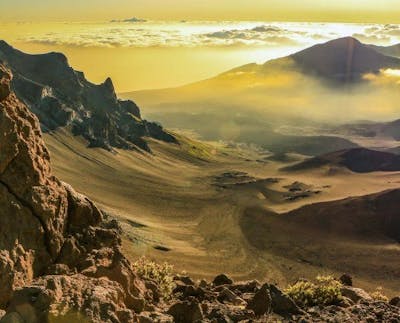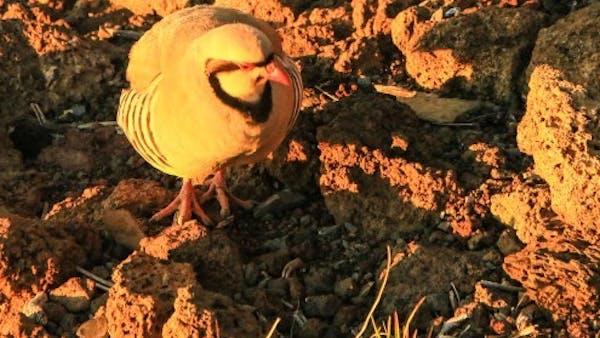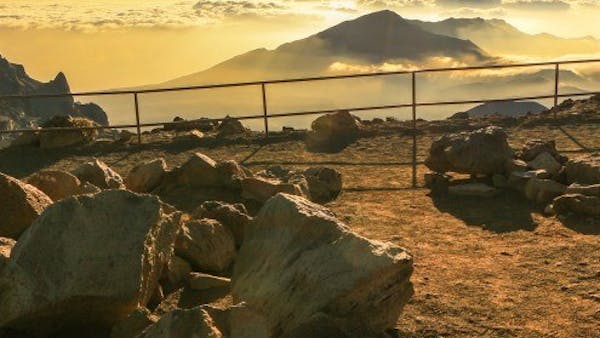EPIC MAUI SUNRISES
For most people, the chance to sleep in late is one of the perks of going on vacation. But here on Maui, you definitely want to get up early… at least once.
A Maui sunrise is extra special when viewed from way up above the island shores, Haleakalā Summit. From here you can view the incredible views east of the morning sun, and watch as the morning light spreads dramatically across the volcano’s crater floor.

DRESS WARMLY
At over 10,000 feet above sea level, the summit of Haleakalā is always pretty cold – even if it’s a scoring day at the beach. Dress in layers and bring plenty of blankets!
ARRIVE
EARLY
Do you have your car reservation (recreation.gov) or a tour booked? Sunrise is popular, so arrive at least 30 minutes before sunrise.
WAIT TO LEAVE
Don’t rush off too quickly after sunrise, especially if you want some great pictures. The colors of Haleakalā Valley will grow more vibrant as contrast becomes greater, about 15-20 minutes after sunrise.
GET GREAT PHOTOS
It may seem simple enough to point your camera or phone at the rising sun and get “the shot”, but shooting into the sun can get tricky.
WATCHING A HALEAKALA SUNRISE
The summit parking area is divided into 2 separate parking areas. The first parking area is the main area for viewing the sunrise at the crater. Here, expansive views into the crater provide an amazing foreground for the rising sun. On a clear morning, many will line the railing to view this spectacular vista in the cold morning air. With the lava rock walls of the Visitor Center just steps away, it’s easy to duck inside to warm up and view dozens of exhibits and maps of the mountains, including a three dimensional table mounted map of Maui.
VISITOR CENTER
The best place to experience a sunrise on Maui is from the Summit Visitor Center. The dramatic cliffs and outcroppings nearby reflect the beauty of the morning rays, making for incredible photos. Our sunrise tour takes guests here for the event.
RED HILL OBSERVATORY
The Observatory at the top of Puu Ulaula (“Red Hill”) is just past the first parking lot and marks Haleakala’s highest point. From here, visitors are treated to beautiful 360 degree views. A stop at Puu Ulaula Overlook is not open to tours during sunrise.
KALAHAKU OVERLOOK
The least popular place to watch the sunrise on Haleakala, Kalahaku Overlook requires a short hike and is further down the mountain. This sunrise spot is not recommended unless you are well prepared, as hiking in the dark is risky.
MAUI SUNRISE TIMES THROUGHOUT THE YEAR
It is recommended that you arrive about 30 minutes prior to sunrise to settle into a great spot. The air will be cold until the first rays of sunshine appear, so be prepared to wait in comfort.
DATE |
HALEAKALA SUNRISE |
MAUI SUNSET |
|---|---|---|
| January 1st | 6:56am | 6:00pm |
| January 15th | 6:58am | 6:10pm |
| February 1st | 6:55am | 6:21pm |
| February 15th | 6:48am | 6:29pm |
| March 1st | 6:39am | 6:35pm |
| March 15th | 6:27am | 6:40pm |
| April 1st | 6:12am | 6:49pm |
| April 15th | 6:00am | 6:49pm |
| May 1st | 5:50am | 6:55pm |
| May 15th | 5:42am | 7:01pm |
| June 1st | 5:38am | 7:08pm |
| June 15th | 5:38am | 7:12pm |
| July 1st | 5:41am | 7:16pm |
| July 15th | 5:46am | 7:15pm |
| Aug 1st | 5:52am | 7:09pm |
| Aug 15th | 5:57am | 7:01pm |
| Sept 1st | 6:02am | 6:49pm |
| Sept 15th | 6:06am | 6:33pm |
| Oct 1st | 6:10am | 6:19pm |
| Oct 15th | 6:14am | 6:06pm |
| Nov 1st | 6:20am | 5:55pm |
| Nov 15th | 6:28am | 5:49pm |
| Dec 1st | 6:38am | 5:47pm |
| Dec 15th | 6:47am | 5:50pm |
TIPS FOR YOUR EPIC HALEAKALĀ SUNRISE PHOTO

It may seem simple enough to point your camera or phone at the rising sun and get “the shot”, but shooting into the sun can get tricky. The best chance of capturing a great photo is actually before the sun crests the far side of the crater rim, some 7+ miles away. Although wide angle lenses are useful for this dramatic landscape, a telephoto lens will give you the ability to zoom in on crater details such as cinder cones and intricate cloud banks.
Sunrise exposures can also be tricky. A tripod is important, and will help you snap some longer exposures before sunrise. After sunrise, be careful of lens flare when shooting straight into the sun. A good tip to avoid lens flare is to frame either left or right of the sun, depress the shutter button halfway to lock focus and exposure, and – without letting off of the pressure on the shutter button – reframe with the sun in the composition and depress the shutter the rest of the way. This technique will go a long way in keeping the foreground and cloud colors properly exposed without losing detail from an underexposure (dark) photo. For professional style exposures, consider investing in a graduated neutral density filter or bracketing your images for processing HDR (High Dynamic Range) images later.

THE MAUI SUNRISE WHERE YOU ARE STAYING
HANA
Unlike at Haleakala Summit, where the clouds and valley walls set the scene, the sun rises over the ocean in Hana lighting up the horizon, clouds and ocean with brilliant colors. It is one of the many things that make Hana “heavenly”. Staying the night and being on this side of the island for sunrise is magical as this rugged and ancient land comes to life. It is also a time of day few see except the residents of Hana who cherish the start of the day in this amazing part of Maui!
HALEAKALA SUMMIT
The best place to view a Maui sunrise is Haleakala Summit. Some of the very first visitors to Maui, including Mark Twain in 1866, ventured to the summit for sunrise. Today the winding 38 mile Crater Road sees hundreds of thousands of visitors every year. In order to control the impact of so many people visitors to the summit must now make reservations in advance, or book a sunrise tour with a certified tour operator.
SOUTH MAUI
The sun doesn’t crest the top of Haleakala until around 30 to 45 minutes after sunrise depending on cloud cover. If your at the beach you can enjoy the early morning ocean activities without the need for sunscreen. Simply walking the miles of beaches in Kihei or Wailea at sunrise is beautiful experience as birds, whales and waves can be seen in the quiet calm of the early mornings along south Maui shorelines.
WEST MAUI
The West Maui Mountains block the direct view of sunrise from this side of the island. However there can be spectacular clouds over the islands of Lana’i and Molokai which can splash beautiful colors across the sky. During a full moon the sun is rising while the moon is setting, so be on the lookout for the full moon setting on the ocean or Lana’i. It can make for an unforgettable photo!
CENTRAL MAUI
There are several places to view the sunrise from the central part of Maui which is primarily along the east side of the West Maui Mountains from the Waihee/Wailuku area stretching to Maalaea Harbor. Haleakala sets high in the horizon creating a striking silhouette!
NORTH MAUI
Out on the northernmost points of the island, you can capture the sunrise in early summer over the water. for the most part though the cloud cover can block the sun until it rises higher in the sky. If you on the north shore during sunrise often the most spectacular colors and view will be looking west at the West Maui Mountains and their cloud cover.
